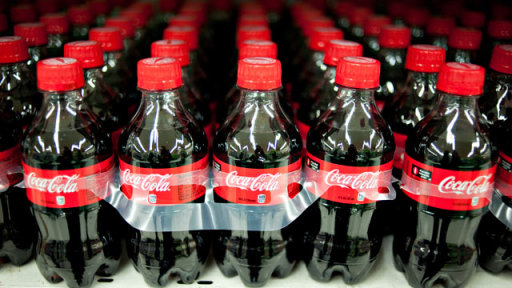By Sharecare Expert David L. Katz, MD
We have a long history of doing questionable things to vegetable oils -- and putting them in odd places in the food supply.
The best known and deservedly most notorious example to date is partial hydrogenation. Partially hydrogenated vegetable oils are formed when normally unsaturated oils are bombarded with hydrogen so that some but not all of those available bonds are "saturated" with it. The result is trans fat, which we now know to be, in essence, a slow poison, contributing to the risk of heart disease in particular. Partially hydrogenated oils became widespread in the food supply because they are inexpensive to make and act much like saturated fats, providing stability and heat tolerance. With time, we have come to learn that partially hydrogenated oils lengthen the shelf life of foods but are apt to shorten the shelf lives of people eating the food. They are still out there, but have gone from nearly ubiquitous to increasingly rare. Good riddance to them.
Is brominated vegetable oil (BVO) the new trans fat? No.
Trans fat has long been used in many products with a significant amount of oil in the mix. Exposure to trans fat has come in amounts of hundreds of milligrams, and even grams. Paracelsus, considered the father of toxicology, famously told us "the dose makes the poison." Our exposure to trans fat was, and still is, at dose levels clearly linked to bad health outcomes.
Dr. Oz: BVO and Your Health
In contrast, brominated vegetable oil is used in fruit-flavored soft drinks in amounts so tiny it often need not even be listed among the ingredients. BVO is measured in parts per million rather than grams or milligrams. Bromine is used to increase the weight of the oil so it doesn't rise to the top, and the oil then serves to keep fat-soluble citrus flavors in suspension. The result is probably an enhancement of the appearance of the drink and perhaps the taste.
BVO has been used in the making of soft drinks in the U.S. since the 1930s. It received the designation "generally recognized as safe" from the U.S. FDA in 1958, but this was revised in 1970, at which time restrictions were placed on the amount that can be used in food. The ingredient is now found in a variety of citrus-flavored beverages, including, but not limited to Gatorade, Mountain Dew, Powerade, Fanta and Fresca.
BVO is in the news because it has been "called out" as an ingredient in a flame retardant after a young girl noted it on the Gatorade ingredient list and did some investigating. It's true that BVO can be used in a flame retardant, but I'm not sure it's all that relevant. Elements that are an essential part of the human body can be mixed in some pretty toxic combinations as well. Some of what we are made of can be used to make pesticides and insecticides and other poisons, all depending on doses and what else is in the mix.
Detox Your Life
Is BVO dangerous? Possibly. Reviewing the relevant literature, I did find one case of harm linked to bromine in soft drinks, reported in 1997. A man consuming 2 to 4 liters a day of citrus-flavored soft drinks developed a neurological condition due to bromine excess. He was eventually diagnosed and treated, and he recovered.
I could find no other evidence of documented harm in people, although that of course does not rule it out. But since the ingredient has been in our beverages for nearly 100 years, we've had plenty of time to see harmful effects if they were occurring at a meaningful level. If they are occurring, they are subtle enough to fly mostly under the radar.
Since much of the focus has been on Gatorade, which is taking BVO out of its mix, I checked on the overall composition of their original "Perform" series drink. In 12 ounces, it has 80 calories, 160 milligrams of sodium and 21 grams of sugar. I really don't think we need BVO in this mix to raise concerns about it.
And that, frankly, is where I land. Animal studies suggest some possibility of harm from BVO. Bromine toxicity is known to occur in people, generally resulting from medications that contain bromine in much higher concentrations than soft drinks. So the case can be made for "why take a chance?". If we can get rid of the BVO, we might as well.
But while any harms of BVO are speculative, the public health toll of excess calories and sugar is well established. The question for the teenage girl concerned enough about ingredients to investigate BVO is: Why was she drinking a sugar-sweetened beverage in the first place? There is no BVO added to water.
I have long noted that we distort risks -- trivializing those we feel we can control (such as our sugar intake, or driving too fast, or texting while driving) and exaggerating those we feel we cannot (such as BVO). The Pulitzer-prize winning author Jared Diamond made that same point in this week's New Your Times.
Reduce Your BVO Exposure
I don't drink any of the products that contain BVO -- and wouldn't drink them if they didn't, either. If you are really drinking enough of the sugared or artificially sweetened citrus-flavored beverages in question to be at any genuine risk of harm from BVO, then my view is: You've got bigger, far better-documented things to worry about!
Source:
"Flame Retardants" in Your Gatorade: Hazard, or Hype? | Healthy Living - Yahoo! Shine
http://shine.yahoo.com/healthy-living/flame-retardants-gatorade-hazard-hype-225700621.html;_ylt=A2KLOzEQpwlRzRUATaghmolQ
